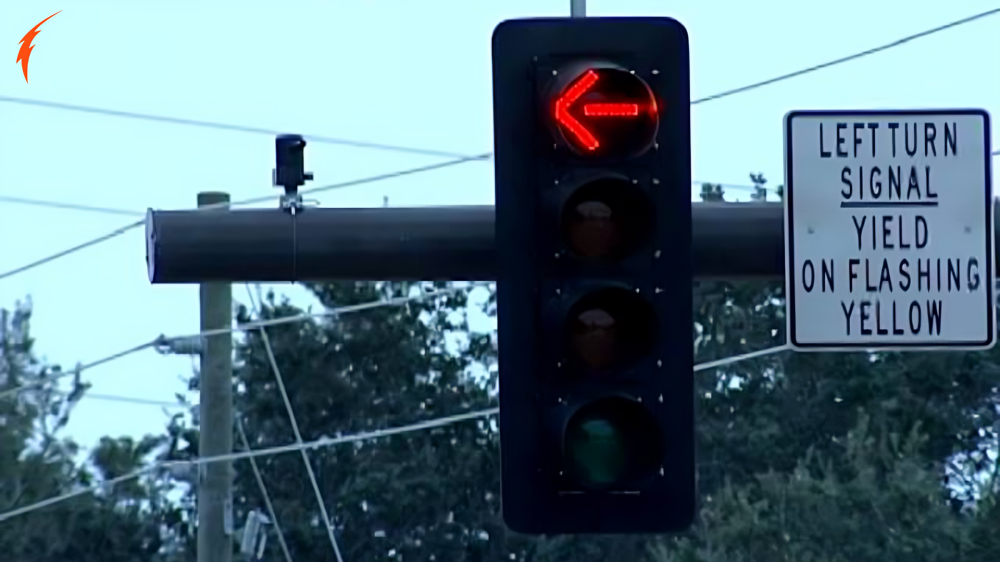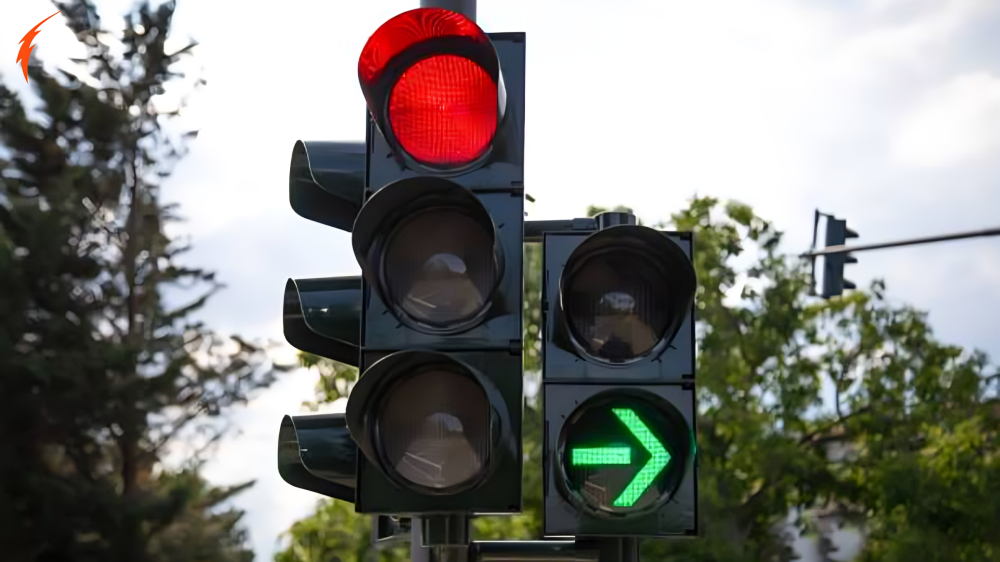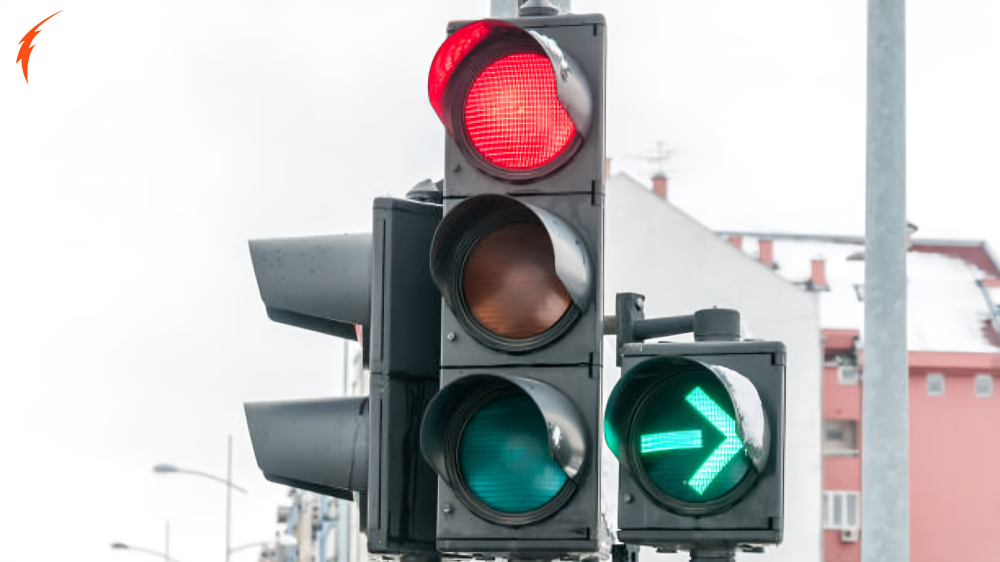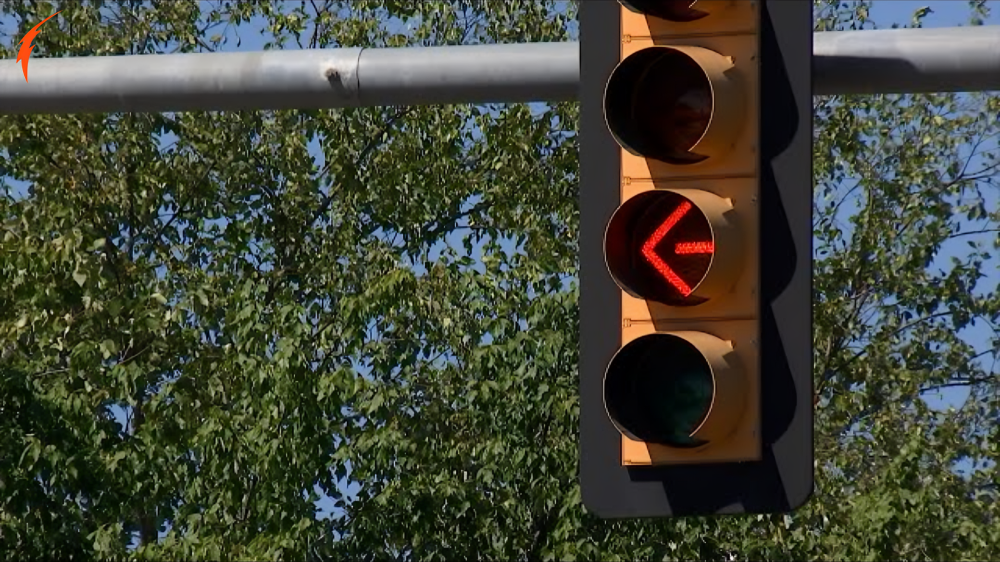Navigating the road as a driver requires a deep understanding of various traffic signals and road signs, all designed to keep you safe and ensure the smooth flow of traffic. One signal that has garnered attention and occasional confusion is the Flashing Red Arrow AARoads. While red lights, green lights, and even yellow arrows are well-understood, the Flashing Red Arrow AARoads may leave some drivers wondering what exactly is expected of them.
Is it just a red light that you stop for? Can you turn if it’s flashing? Do you have to wait until the flashing stops? These are all questions that drivers might ponder when faced with this signal. In this article, we’ll take an in-depth look at the Flashing Red Arrow AARoads, its meaning, its impact on drivers, and how you can navigate it with confidence.
What is a Flashing Red Arrow?
To begin, let’s break down what a Flashing Red Arrow AARoads signal is. A Flashing Red Arrow AARoads is a traffic signal designed to regulate turns at intersections. It is different from a traditional red arrow, which indicates that turning in the direction of the arrow is prohibited until the signal changes. A flashing red arrow, however, carries a different set of instructions.
When you encounter a Flashing Red Arrow AARoads, it essentially means that you must come to a complete stop before proceeding, similar to how you would treat a stop sign. Once you’ve stopped, you may then turn in the direction of the arrow, but only if the coast is clear—meaning there are no oncoming cars, pedestrians, or other obstacles. The flashing red arrow is used to maintain the flow of traffic at intersections while still prioritizing safety.
How is a Flashing Red Arrow Different from a Solid Red Arrow?
The distinction between a flashing red arrow and a solid red arrow is one that all drivers should understand. While both types of arrows signal a stop, their meanings and rules are slightly different.
- Solid Red Arrow: When you encounter a solid red arrow, you must stop, and you are not allowed to proceed in the direction of the arrow. It prohibits you from turning until the signal changes to a green arrow or another permissive indication. For example, if you are at a light with a solid red right-turn arrow, you cannot turn right to red, even if there are no cars coming.
- Flashing Red Arrow: The Flashing Red Arrow AARoads, on the other hand, allows more flexibility. While you still need to stop completely, you may proceed after yielding to oncoming traffic or pedestrians. The flashing red arrow serves as a stop-and-go signal, letting you turn once the road is clear.
Understanding this difference is crucial for following traffic laws and ensuring the safety of yourself and others on the road.

Why Are Flashing Red Arrows Used?
The use of Flashing Red Arrow AARoads is strategic, aimed at keeping traffic moving while minimizing the risk of accidents. Here are several reasons why traffic engineers might install a flashing red arrow at an intersection:
Improving Traffic Flow:
At certain intersections, especially those in less congested areas, forcing drivers to wait at a solid red arrow when no cars are approaching can be inefficient. By using a flashing red arrow, traffic can continue moving more smoothly. Drivers are permitted to turn when the way is clear, which can reduce congestion and unnecessary waiting time.
Safety Considerations:
The Flashing Red Arrow AARoads encourages cautious driving. Unlike a green light, which gives the driver the right-of-way, the flashing red arrow makes the driver stop and assess the situation before proceeding. This moment of pause can prevent accidents caused by impulsive or careless driving.
Adaptability to Different Traffic Conditions:
Flashing red arrows are often used in areas where traffic patterns change throughout the day. For example, during peak hours, traffic might be heavy enough to warrant more strict control of turns, which might be indicated by a solid red arrow. But during off-peak times, a flashing red arrow can be employed to reduce unnecessary waiting.
Pedestrian Safety:
Flashing red arrows can also help enhance pedestrian safety. By requiring drivers to stop and check for pedestrians before turning, these signals can reduce the likelihood of accidents at intersections where foot traffic is common.
How to Respond to a Flashing Red Arrow AARoads
When you approach an intersection with a Flashing Red Arrow AARoads, Right here’s how you need to respond.
- Come to a Complete Stop: Even though the arrow is flashing, the first thing you need to do is stop fully. Do not proceed as if the light is green or yellow. Treat the sign like a forestall signal.
- Assess the Intersection: Before making your turn, carefully check all directions. Are there any oncoming vehicles that might have the right-of-way? Are there pedestrians crossing the street? Is there a cyclist in the bike lane? Make sure that the road is completely clear before moving.
- Proceed When Safe: Once you have stopped and ensured that there are no obstacles or hazards, you may proceed with your turn. Keep in mind that you do not have the right-of-way; you are required to yield to other vehicles, cyclists, and pedestrians.

Common Misunderstandings About Flashing Red Arrows
Despite their relatively straightforward nature, there are several common misconceptions about Flashing Red Arrow AARoads. Let’s address a few of these to ensure you’re driving with confidence and understanding.
“It’s just like a green arrow.”
Some drivers mistake the flashing red arrow for a green arrow, assuming that they can proceed without stopping. This is incorrect. The flashing red arrow requires you to stop first. You may only turn after confirming that it’s safe.
“You don’t have to yield to pedestrians.”
Another misconception is that a flashing red arrow only requires yielding to vehicles, not pedestrians. This is also incorrect. When the Flashing Red Arrow AARoads is active, you must yield to both vehicles and pedestrians. If there are people crossing the street in the direction you’re turning, you must wait for them to cross before proceeding.
“It’s okay to roll through the intersection.”
Sometimes, drivers believe that they can roll through an intersection with a flashing red arrow without fully stopping. This is a violation of traffic law. Like a stop sign, you are required to come to a complete stop, regardless of whether there are other vehicles around.
Safety Tips for Navigating Flashing Red Arrow AARoads
While flashing red arrows is meant to improve safety and traffic flow, it’s important to approach them with caution and care. Here are some safety tips to help you navigate intersections with Flashing Red Arrow AARoads:
Be Patient
Don’t rush through a flashing red arrow. Take the time to stop and evaluate the situation before proceeding. Rushing through without fully assessing the intersection could lead to an accident.
Be Aware of Pedestrians
Pedestrians often have the right-of-way at intersections, especially when using crosswalks. Always check for people crossing the street, and never turn if a pedestrian is in the crosswalk. Even if you’re in a hurry, safety should always be your top priority.
Looking for Cyclists
In many urban areas, bike lanes run alongside vehicle lanes. Before making a turn at an intersection with a Flashing Red Arrow AARoads, double-check for cyclists who might be crossing the intersection or riding alongside your vehicle.
Check Blind Spots
Before proceeding through the intersection, make sure to check all your blind spots. Other vehicles, pedestrians, or cyclists might be in areas that aren’t immediately visible. Checking your mirrors and blind spots is crucial to ensuring you’re turning safely.
Adapting to Weather Conditions
If it’s raining, snowing, or icy, take extra precautions when navigating a Flashing Red Arrow AARoads. Slippery roads can increase stopping distances, and reduced visibility may make it harder to see other vehicles or pedestrians.
Flashing Red Arrows and Driver Education
Because the Flashing Red Arrow AARoads is not as common as other signals, it’s essential for drivers to receive proper education on what it means. Traffic authorities should ensure that this signal is included in driver education programs to reduce confusion and improve safety. The more familiar drivers are with this signal, the better they can respond when they encounter it on the road.
Flashing Red Arrows and Pedestrian Safety
It’s not just drivers who need to be aware of Flashing Red Arrow AARoads—pedestrians also have a role to play in ensuring safety at these intersections. When crossing the street, pedestrians should make sure that vehicles are coming to a full stop at the flashing red arrow. Just because the light is flashing doesn’t guarantee that the driver sees them or will stop on time.
Making eye contact with drivers before stepping onto the crosswalk can help ensure that they’re aware of your presence. Pedestrians should also be cautious of vehicles making turns, as drivers may be focused on oncoming traffic rather than on pedestrians crossing the street.

Conclusion
In summary, a well-crafted FAQ section is an essential tool for improving the user experience and streamlining communication. It helps address common concerns, reduces the burden on customer support, and provides users with quick and easy access to information. A thoughtfully organized FAQ, updated regularly and optimized for search engines, can significantly enhance customer satisfaction while driving traffic to your website. By incorporating clear, concise answers and even multimedia elements, a FAQ can serve as a valuable resource for both users and businesses alike.
More: Reddit
FAQ: Flashing Red Arrow AARoads: What Does It Mean for Drivers?
- What is a Flashing Red Arrow AARoads?
- A Flashing Red Arrow AARoads is a specific traffic signal that indicates you must stop completely before proceeding. Unlike a solid red arrow, which prohibits you from turning, a flashing red arrow allows you to turn after coming to a complete stop and ensuring the intersection is clear of vehicles, pedestrians, and other obstacles. It essentially functions like a stop sign for turning lanes, allowing for movement when it’s safe to proceed.
- How is a Flashing Red Arrow Different from a Solid Red Arrow?
- A solid red arrow means you cannot make a turn in the direction of the arrow until the signal changes. You must wait until you see a green arrow or another permissive signal. A Flashing Red Arrow AARoads, however, permits turning after stopping completely and checking for safety. Once you’ve determined it’s safe, you can proceed in the direction of the arrow, even though it’s flashing red.
- Is It Mandatory to Stop at a Flashing Red Arrow?
- Yes, it is mandatory to stop at a Flashing Red Arrow AARoads. Even if there are no other cars or pedestrians at the intersection, you must come to a complete stop before proceeding. Rolling through or failing to stop at a flashing red arrow can result in traffic violations, fines, or accidents.
- Can I Turn Immediately After Stopping at a Flashing Red Arrow?
- After stopping, you can turn only when it’s safe to do so. You need to yield to oncoming traffic, pedestrians, and any other road users. If the intersection is clear, you are allowed to proceed with your turn. If traffic or pedestrians are present, you must wait until the way is clear.
- Why Are Flashing Red Arrows Used?
- Flashing Red Arrow AARoads signals are used to improve traffic flow while maintaining safety. They allow drivers to turn when it’s safe without waiting unnecessarily at red for arrows, especially during low traffic periods. The signal is also helpful at intersections where visibility is high, but the need for caution is still essential for safety.



